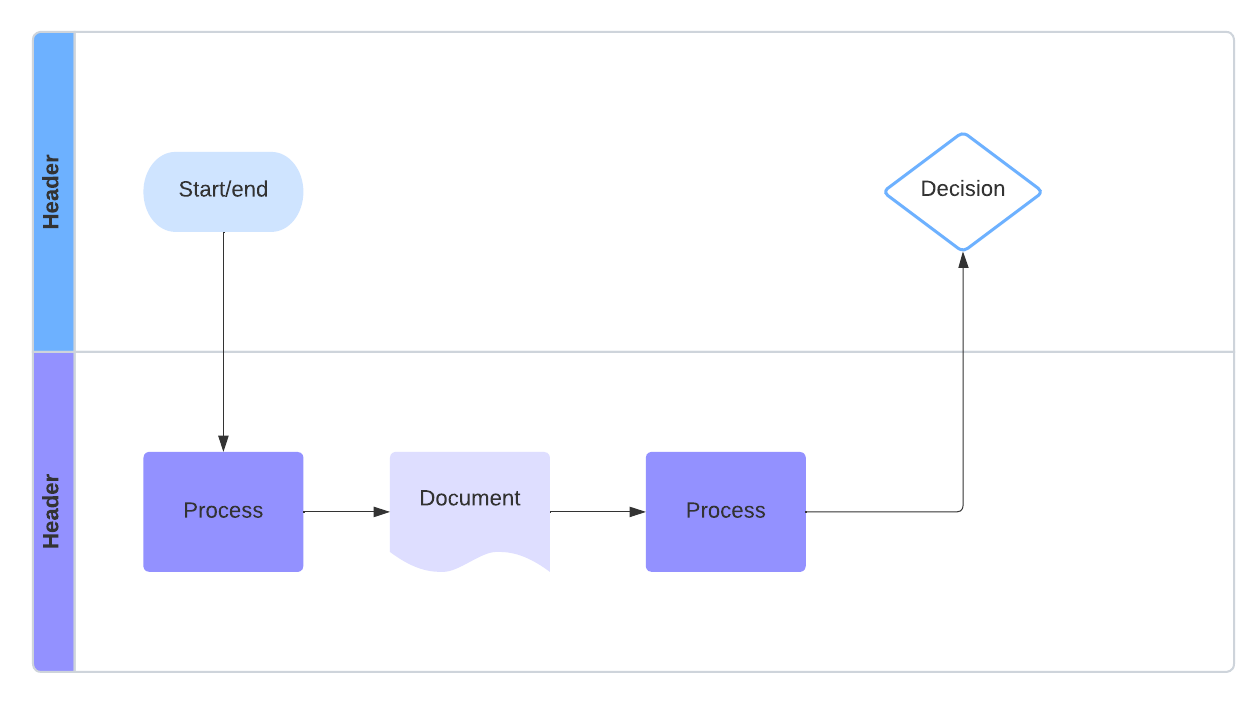
4 types of communication styles you're working with [+ flowchart assessment]
Reading time: about 5 min
Topics:
Have you ever delivered a compelling argument, eager to persuade someone of your point of view, only to feel like they didn’t get the point? Or, have you tried connecting with a team member on a personal level, only to be met with apprehension? You’re not alone. Chances are, you made a great argument for your case and showed sincerity to your colleague, but we all communicate differently, which can lead to misunderstandings.
A recent Forbes study reveals that 42% of workers experience stress due to ineffective communication. Understanding that everyone has different communication preferences is important for effectively communicating with teammates and stakeholders.
In this article, we’ll explore the four different types of communicators based on research from Mark Murphy, founder of Leadership IQ. We’ll also provide a flowchart assessment you can share with your team to identify your communication styles and discuss how to leverage them for better collaboration.
Analytical
People who have an analytical communication style prefer to present data and facts to support what they say and tend to use precise and specific language. They thrive in roles that involve logic, data analysis, and direct communication. Analytical communicators are often the data scientists, researchers, analysts, and technical writers within an organization.
When you work with analytical communicators:
- Show them the numbers: Some people might want a general idea of the company’s progress, but with analytical communicators, don't be afraid to be specific and present data to convey value. If you share that revenue has gone up, they'll likely want to know by how much and how that compares to previous quarters. Consider creating visual diagrams that include data linking to give analytical communicators the information they care about most.
- Argue logic over emotions: Analytical communicators often look at situations logically and objectively, so you're going to have a hard time arguing that you based a major business decision on a gut feeling. Present this group with data to earn their trust—look to them as a source of informational expertise.
- Stick to essential conversations: Because analytical communicators like less emotional conversation, they’re typically more interested in logical discussions and hard numbers than in small talk. This might look like sending a Slack message and linking it to a diagram with context over scheduling a 30-minute video call.

Before you schedule your next meeting, read our asynchronous collaboration guide. The analytical communicator will thank you.
Read nowIntuitive
Intuitive communicators prefer to understand the big picture and quickly get to the point. They avoid getting bogged down in too much detail but rather rely on their intuition and innovative skills. These are likely your creative directors, marketing strategists, product managers, and visionary leaders.
When you work with intuitive communicators:
-
Keep instructions quick and to the point: The intuitive communicator may prefer a broad overview to a step-by-step walkthrough of a process, so you should limit details to what directly pertains to this person. Focus on communicating the “why” behind the project or idea.
- Take their ideas seriously: These team members love brainstorming big ideas and have more unconventional ways of thinking. Give them the opportunity to present their unique take on business process or problems, whether in group meetings or one-on-one.
- Use visuals: Although intuitive communicators may want to jump straight to the solution, they may need more detail later in order to execute. Consider using a mind map. Mind mapping is a great way for intuitive communicators to visualize their thoughts and get all of their bright ideas out. From there, using a visual diagram, such as a process flowchart, can give your intuitive team members a quick overview of the process and then the ability to drill down when it's pertinent to their work.

Functional
Functional communicators focus on processes and carefully plan their actions so that nothing is missed. They thrive in roles that require accuracy and structure, such as a QA analyst, operations manager, accountant, or compliance officer.
When you work with functional communication styles:
- Map out the entire process: Functional communicators love well-thought-out plans and want to implement the process exactly as intended. Create a flowchart with swimlanes to show their specific responsibilities, timelines, and other documentation to give them the context they need.
- Be prepared to answer questions: These communicators will appreciate detail and they will have greater faith in your leadership if you have the answers. Beyond the main process, you should consider due dates, contingency plans, and more.
- Encourage documentation: Encourage your functional communicator to document their processes, projects, and decisions. This will help maximize their strengths while also providing clarity into their work and greater alignment on your team.
- Invite feedback: Ask these detail-oriented team members to provide feedback on any gaps or less efficient parts of your process. With additional perspective, you could prevent issues before they occur, saving time and resources.

Check out our toolkit for effortless documentation (includes free templates).
Learn morePersonal
Personal communicators emphasize relationships and establish personal connections to understand others' thoughts. They are collaborative and empathetic people well suited for roles in HR, customer service, sales, or other people-facing professions.
When you work with personal communicators:
-
Foster visual collaboration: Personal communicators are relationship-oriented and generally prefer working as a team. Their attention to emotional cues allows them to pick up on nuances others might miss. Create opportunities for them to connect with the team through icebreakers, brainstorms, and check-ins. When we collaborate visually, we strengthen team communication, improve clarity, and boost productivity. It’ll be a win for everyone.
- Be transparent: These individuals value strong personal relationships and clear communication., Before you dive into work-related assignments and meetings, take the time to ask them how their week is going, showing that you care. If your team works in an office, consider meeting with them face-to-face for weekly one-on-one meetings where you share wins and obstacles. If you’re remote, schedule a video call and use a visual platform like Lucidspark to share ideas and collaborate.
- Leverage their positivity to boost team morale: Murphy's research explains that personal communicators succeed at listening and resolving conflicts. When implementing significant change in your team or organization, you can often rely on these individuals to diffuse any tension and boost morale.

Finding ways to intentionally connect can be challenging, especially for hybrid and remote teams. Explore how visual collaboration can boost connection and alignment.
Read moreCommunication styles chart
So, which communication style are you?


Now that you’ve identified your team’s communication styles, discover the different approaches to collaboration and how to work better as a team.
Check it outAbout Lucid
Lucid Software is the leader in visual collaboration and work acceleration, helping teams see and build the future by turning ideas into reality. Its products include the Lucid Visual Collaboration Suite (Lucidchart and Lucidspark) and airfocus. The Lucid Visual Collaboration Suite, combined with powerful accelerators for business agility, cloud, and process transformation, empowers organizations to streamline work, foster alignment, and drive business transformation at scale. airfocus, an AI-powered product management and roadmapping platform, extends these capabilities by helping teams prioritize work, define product strategy, and align execution with business goals. The most used work acceleration platform by the Fortune 500, Lucid's solutions are trusted by more than 100 million users across enterprises worldwide, including Google, GE, and NBC Universal. Lucid partners with leaders such as Google, Atlassian, and Microsoft, and has received numerous awards for its products, growth, and workplace culture.
Related articles
4 visual collaboration tips to boost team engagement and productivity
In this blog post, we’ll uncover the benefits of visual collaboration and provide tips for collaborating visually with your team.
7 visual communication tips for non-designers
Explore tips for non-designers on how to leverage visual communication with clarity and intention.
Ideating with introverts at work: Silent brainstorming and other techniques
Explore brainstorming tips that ensure everyone has an equal chance to collaborate in an ideation session.
